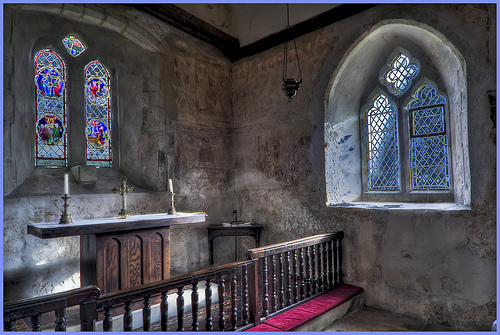
I highly recommend this entire lecture to Episcopal pastors in the Reformed tradition. It is wildly enlightening in seeing how the popular sentiment behind the Anglo-Catholic revival (I say popular sentiment because most of the prime movers of the A.C. revival were orthodox, godly men) of England led us into the current syncretistic mess and allergy to confession that the Episcopal Church currently faces in the U.S. I personally found it of great historical interest (J.C. Ryle seems to be fighting a similar battle) in this regard and many others. I also recommend this lecture to those who are interested in deepening their understanding of the aesthetic, particularly in worship. Read the whole thing, because it is easy to be deceived by the excerpted paragraphs below. Kuyper is not rejecting the aesthetic, as he makes clear throughout the essay. Nor is he rejecting “high church” liturgies, in fact he helped republish an old high church reformed liturgy (Forma Ac Ratio, which was influential in the Episcopal prayer book) and goes out of his way to convey the “liturgical” aspects of historic Calvinism. I think what he is aiming at, to repeat myself, is the popular sentiment behind the need for symbolism. So read it carefully, and read it all.
Every one who, moving in the finite, becomes aware of the existence of something Infinite, has to form a conception of the relation that exists between both. Here two possibilities present themselves. Either the Infinite reveals itself to man, and by this revelation unveils the really existing relation; or the Infinite remains mute and silent, and man himself has to guess, to conjecture, and to represent to himself this relation by means of his imagination; that is, in an artificial way. Now the first line is the Christian one. The Infinite at sundry times and in divers manners spoke in times past by the prophets, and in these late days has spoken to us by his Son�this Son being not a silent mystery, but the eternal, creating and speaking Word. Paganism, on the contrary, being destitute of revelation, wants the symbol, and creates it in its idols, “having mouths but they speak not, having ears but they hear not.” Symbol means a fictitious link between the invisible Infinite and the visible finite. It is derived from sumballein; i.e., bringing two different spheres together. Symbolism is the grasping of something outward and material, upon which the imagination may put the stamp of the unseen and unspeakable. The symbol is the middle link, being related from one side to what you can see and grasp, and from the other side to what you feel, fancy and imagine. As soon, therefore, as the consciousness of the Infinite revives in the public mind, in antagonism to a God-given Revelation, the demand for the symbol necessarily and immediately declares itself. So it was in the Grecian world, so it is now. Of course there exists also an unconscious, ever-changing relation between the Infinite and the finite in the actual phenomena of life; but this relation, being always partial, successive and momentarily gauged, cannot satisfy the soul. What she is longing after is a comprehensive impression of the Infinite in its totality, in its all-pervading and all-permeating action; and this sensation no finite phenomenon is able to stir in us, just because it is finite. What the soul want to realize is a grasping of the Infinite as such; and such an infinite sensation Symbolism only can produce, just because it puts an invisible stamp upon a visible or palpable phenomenon. In the Freemasonry you see quite the same thing. Freemasonry aims at the Infinite, but rejects all revelation, and therefore it created from the very first, and still advocates, the most explicit and elaborated symbolism. Spiritism, on the contrary, is almost choked with thirst for revelation from the other side of the tomb, and consequently knows of no symbolical fancy whatsoever. (more…)